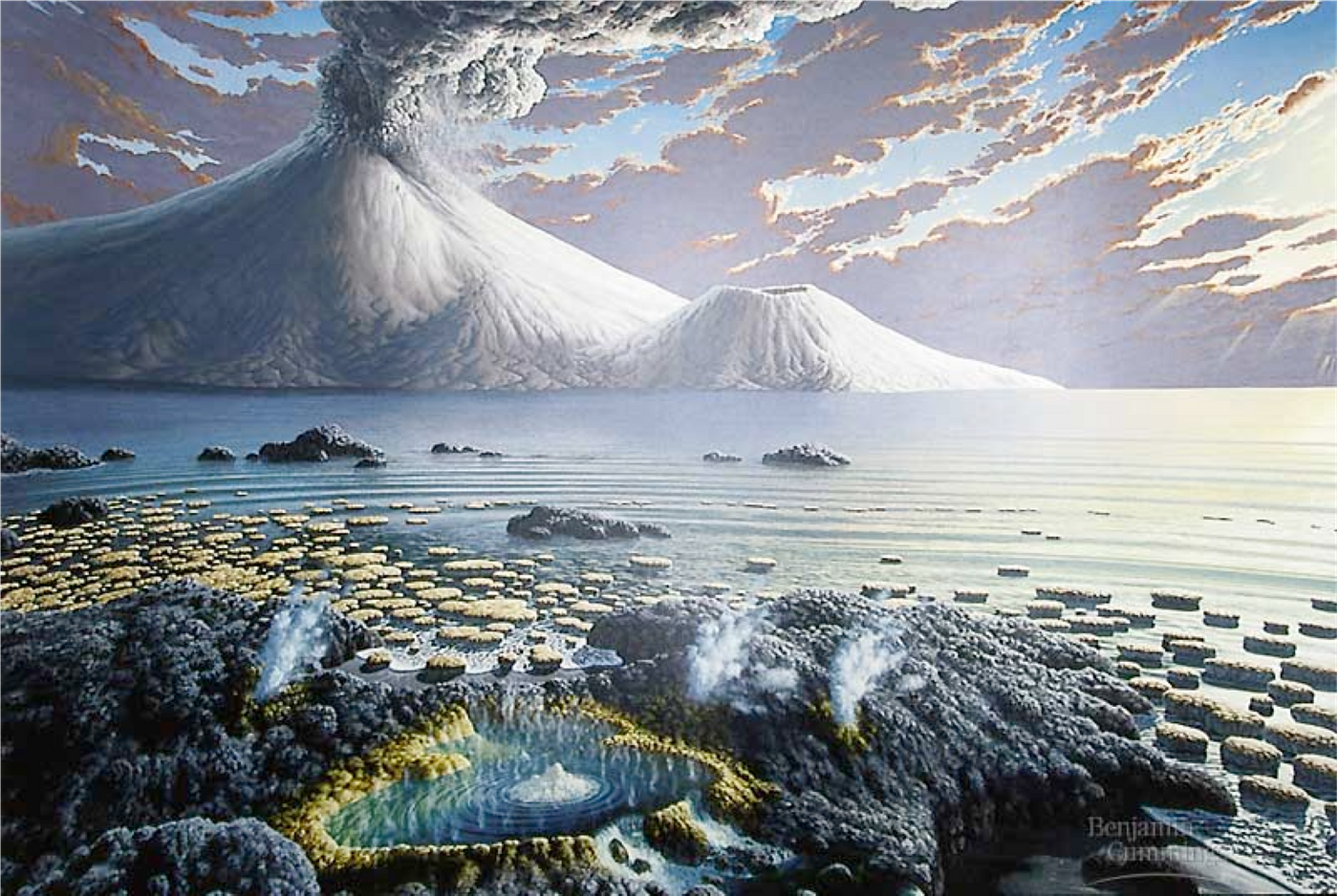Missing Link in Origins-of-Life Discovered
The origin of life, formally known as abiogenesis, is the natural process by which first replicating life form arises from simple organic compounds in the pre-biotic era. It considers the physical and chemical reactions that could have led to early replicator molecules.
Early Earth provides an ideal environment for the emergence of simple organic molecules. Credit: dslauretta.com
A study recently reported in Nature Chemistry revealed that a simple organic molecule – a phosphorylation agent that might have played an essential role in the abiogenesis.
Abiogenesis is studied through a combination of paleontology, chemistry, and extrapolation from the characteristics of modern organisms, and aims to determine how pre-life chemical reactions gave rise to life on Earth.
Life functions through the specialized chemistry of four categories of organic molecules: lipids (main component of cellular membrane), carbohydrates (sugars and cellulose), amino acids (protein building blocks), and nucleic acids (self-replicating DNAs and RNAs). Many approaches to abiogenesis investigate how self-replicating molecules came into existence. It is thought that RNAs could have been the predominant players in the early years of abiogenesis.
One important hypothesis in the origins-of-life theorem is that phosphorylation, a chemical reaction that adds phosphoryl groups to molecules, may have been crucial for the assembly of three key molecules: nucleotides, polypeptides, and lipids. No one has ever found a phosphorylating agent that would have been present in the pre-biotic environment of the Earth.
A group of chemists at The Scripps Research Institute (TSRI) claimed that they have now identified diamidophosphate (DAP) as the missing phosphorylation agent. "We suggest a phosphorylation chemistry that could have given rise, all in the same place, to oligonucleotides, oligopeptides, and the cell-like structures to enclose them," said Ramanarayanan Krishnamurthy, the senior author and professor of chemistry at TSRI. "That in turn would have allowed other chemistries that were not possible before, potentially leading to the first simple, cell-based living entities."
The study is a part of an ongoing effort to unravel missing link that bridges pre-biological chemistry and cell-based biochemistry. The TSRI team has discovered that DAP, a product of trimetaphosphate, can efficiently phosphorylate a wide variety of (pre)biological building blocks such as nucleosides/tides, amino acids, and lipid precursors, under the pre-biotic aqueous environment without the need for a condensing agent. What is more important, higher-order structures like oligonucleotides, peptides, and liposomes can also be formed under the same phosphorylation conditions.
In many previous reports, different chemical reactions were showed to be capable of phosphorylating life’s building blocks. But they all involved using different phosphorylating agents for different types of molecules; the reaction environments were also different from one to another.
The TSRI researchers are confident that DAP, among all other possibilities, is likely the true missing link in the phosphorylation of pre-biotic earth. "It has been hard to imagine how these very different processes could have combined in the same place to yield the first primitive life forms," said Krishnamurthy. "With DAP and water and these mild conditions, you can get these three important classes of pre-biological molecules to come together and be transformed, creating the opportunity for them to interact together," he added.
The team also had plans to team with early-Earth geochemists to try to identify potential sources of DAP, or similar phosphorus-nitrogen based phosphorylating agent, to further verify their theory.
Can Science Explain the Origin of Life? Credit: Stated Clearly
Source: phys.org









